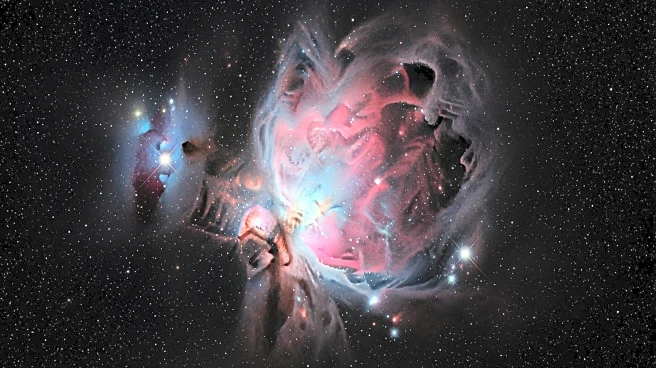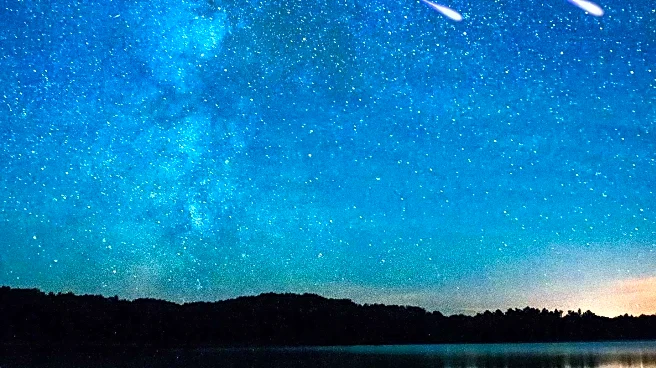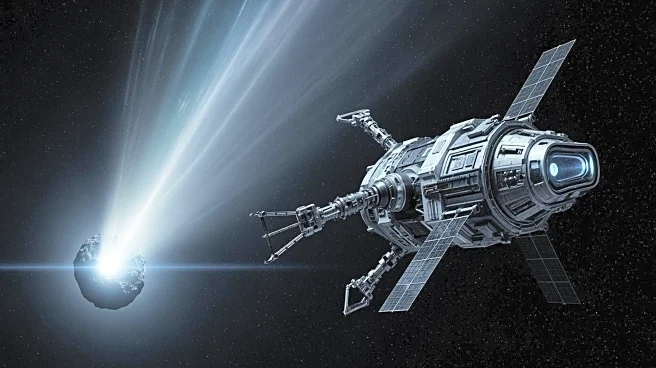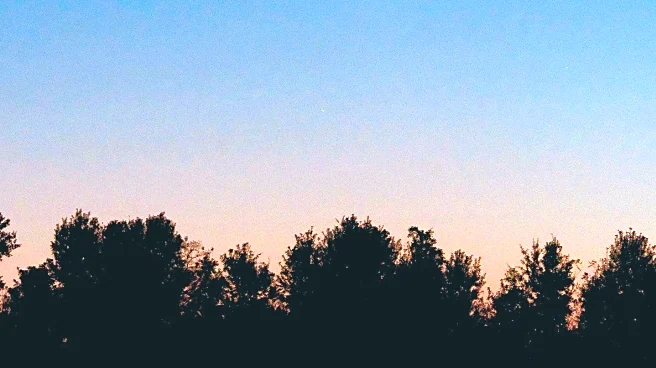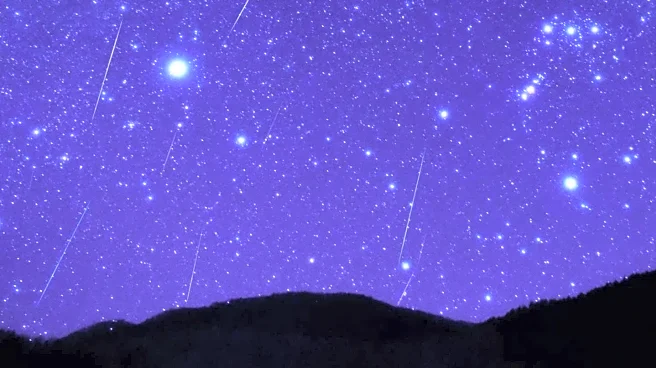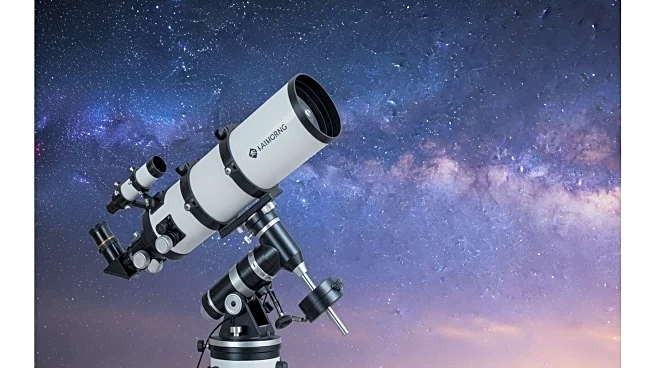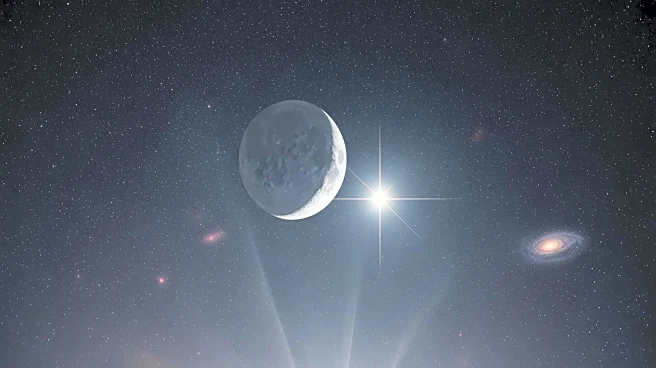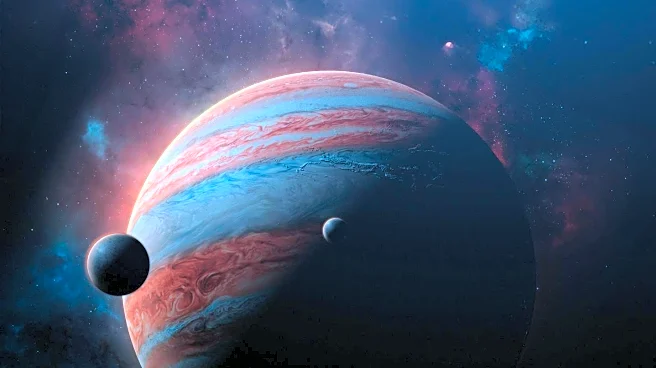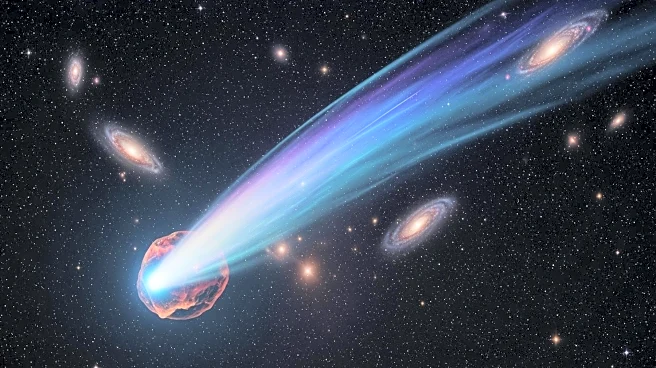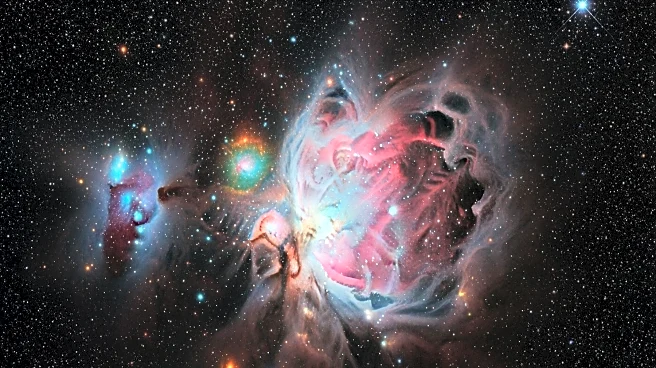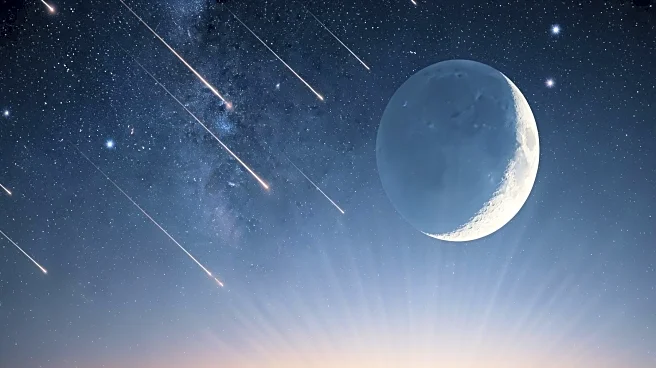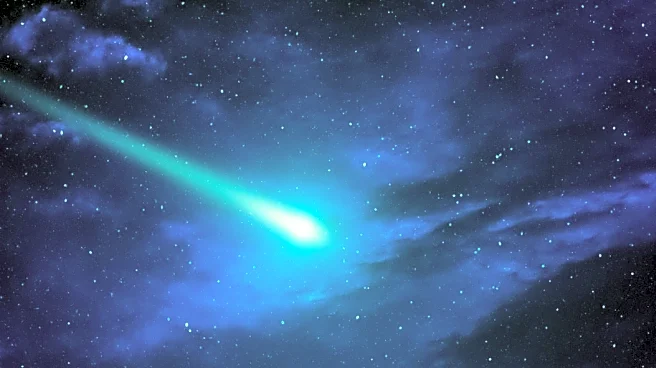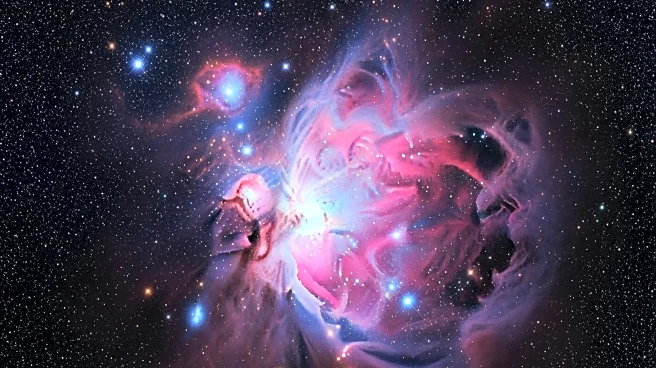What's Happening?
Astrophotographer David Joyce has captured a striking image of the Medulla Nebula, also known as CTB 1, a supernova remnant located approximately 9,132 light-years from Earth in the constellation Cassiopeia. This nebula, which resembles both a garlic
bulb and a human brain, is the result of a supernova explosion that occurred around 10,000 years ago. The explosion also created a superdense pulsar, discovered in 2009, which is moving away from the explosion site at 2.5 million miles per hour. Joyce used an 8-inch Schmidt-Cassegrain telescope and a ZWO astronomy camera to capture the image over seven nights in September, dedicating over 50 hours of exposure time to highlight the nebula's details.
Why It's Important?
The image of the Medulla Nebula provides valuable insights into the aftermath of supernova explosions and the formation of pulsars. Such astrophotography not only enhances our understanding of cosmic events but also inspires public interest in astronomy. The detailed capture of the nebula's structure can aid scientists in studying the interactions between supernova remnants and interstellar gas, contributing to broader astrophysical research. This work underscores the importance of amateur astronomers in advancing scientific knowledge and engaging the public with the wonders of the universe.
